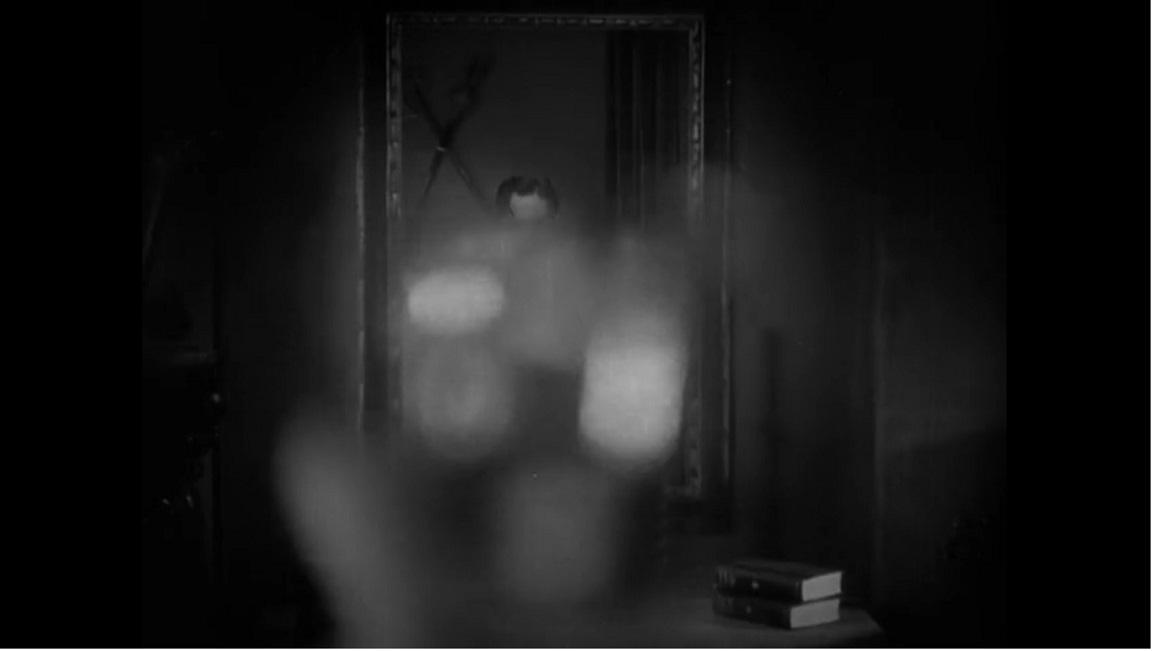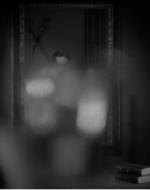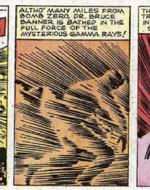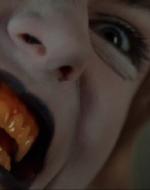Created by Spencer Bullock on Tue, 11/22/2022 - 12:42
Description:
Introduction
Hyde is the manifestation of the repressed id. In the original story, it’s evil that needs to be separated and excised from the host. In later iterations, the manifestation of the Hyde archetype changes in different ways. However, the animalistic nature of humans is often explored, and the primal urges that lie underneath our composed, socially acceptable ego is tested. Dr. Jekyll and Mr. Hyde has been adapted hundreds of times, from plays to films, from comic books to video games (Wikipedia). Cultural retellings transformed the method of which Hyde appears in a myriad of different ways. For Mamoulian in the 1930s, the transformation was through a potion, isolated in his lab; The Hulk was created in the 1960s, where he accidentally gets exposed to gamma radiation, causing him to transform whenever he is emotionally distressed; Twin Peaks explored the duality of man through the possessive evil spirit Bob that is hinted at being a figment of Laura Palmer’s imagination; Finally, In 2000, The Farley Brother’s Me, Myself, & Irene used dissociative identity disorder to allow a festering Hank to spawn from the timid, sexually frustrated Charlie.
Freud defined the id as, “the most primitive component of the personality”, attributing the actions and decisions of the id to the “pleasure principle - a desire for immediate gratification of instincts, such as hunger and sex.” (Nickerson, Simply Psychology) Depending on the creator, the manifestation of Hyde and the pleasure that follows can be represented by many different things. As film theorist Laura Mulvey points out, “Among other things, the position of the spectators in the cinema is blatantly one of repression of their exhibitionism and projection of the repressed desire on to the performer.” (Mulvey 7). Most common is the repressed libido, but social commentary through instances like The Hulk’s ability to stop a nuke with a single punch, or Laura Palmer’s ability to manipulate her trauma-induced dreamscape, implies different forms of repression. Both of the former examples can be seen as the id escaping to be safe, just as Stevenson’s original Hyde would repress itself back into Dr. Jekyll in an attempt to hide from his crimes (Stevenson 63). And as Freud states, “Unexpressed emotions will never die. They are buried alive and will come forth later in uglier ways.” To each adaptation and retelling of Jekyll and Hyde, comes an audience anxious to explore the new depths of the human id, in an attempt to better understand the primal desires that come along with the human experience.
Dr. Jekyll and Mr. Hyde (1931)
In looking at Mamooulian’s Dr. Jekyll and Mr. Hyde, one of the first things that pops at you is the ape-man archetype. Mr. Hyde is a hairy, vulgar, aggressive, manipulative, sexual deviant. And how does Jekyll transform into such a creature? Well, by through drinking of course. In this image we see Dr. Jekyll’s first attempt at transforming with the use of his chemical assistant - the potion. The drink sits between Jekyll (and thus the viewers) line of sight, and the mirror in which he can see his idealized self reflected back. Between the 3 is the catalyst for everything to come, the desires, frustration, exuberance, and anguish that sprouts from the roots of nascent evil – the drink. Behind Jekyll’s obscured view is the mirror in which he cannot see himself, as well as 2 thick tomes that look like encyclopedias or textbooks of some sort. The symbol of knowledge and wisdom is put into focus as the symbol of intoxication and transformation is taken out of focus but remains for a moment in front of everything. The 1930s was the time of the Great Depression, where the era of the roaring 20s was ending, and a new era of hardships and economic suffering was beginning to show. Prohibition was also still enacted, and wouldn’t be dissolved until 1933. In spite of Prohibition, the American people continued to drink and the laws inspired organized crime, bootleggers, and enforcement costs upwards of $300 million over the course of its 12 year run (Lerner, PBS). While identical to the text, the transformation through a potion indicates a commentary on the use of drugs and alcohol in the private home. Jekyll is a seemingly normal man, but once intoxicated, he transforms into the primitive, id driven Hyde.
The Incredible Hulk (1962)
In 1962 Stan Lee and Jack Kirby released the first Incredible Hulk issue. Admitting to the inspiration for the Hulk coming from Dr. Jekyll and Mr. Hyde, Stan Lee was inspired by old monsters, including Frankenstein and Quasimodo. However, another motive for the Hulk was the atomizing of the hero. Amidst the anxieties of the cold war, Lee and Kirby wanted to weaponize the atom just as the US military did in 1945 with the atomic bomb. In this image, we see Bruce Banner saving an innocent, but accidently catching the blast of gamma radiation from a bomb he was working on. Instead of transformation through a potion like the Mamooulian version, here the scientist transforms into the monstrosity through a virtuous act. The weapon he was developing was the cause of the transformation instead of the willful act of separating the self. The id is expressed through the want to be a hero, however the tragedy of the Hulk is that he can’t control himself once transformed, and causes severe collateral damage – including the loss of his wife due to radiation poisoning in a later issue. The suppression of Banner’s failures, and his lack of control for his emotional state, causes the Hulk to surface and remain in control for longer and longer periods of time. The Hulk represents a pleasure principle in the culture at the time, where Mutually Assured Destruction was a talking point in grade schools and family homes; by transforming at the atomic level through a selfless act, the power of human ingenuity(technology) combines with human empathy(spirit) to create the human equivalent of the atomic bomb, and thus satiating the terrorized cultural id.
Twin Peaks: Fire Walk With Me (1992)
Twin Peaks is a world of duality. The structure of the TV show portrays a small town and how it responds to the rape and murder of their high school prom queen, Laura Palmer. The film, which came out 2 years after the show, was a prequel that showed the same town through the perspective of Laura herself in her final week. In this scene we get a close up of Laura’s accidental transformation, her face is covered in white makeup to show a ghost-like visage, while the teeth and gums are fully shown, and the gums reddened blood-like and teeth yellowed with crud. The shot is only for an instant, and is the POV of one of Laura’s older lovers and confidants, Harold Bloom. She is grabbing him erratically, and whispering “Fire…Walk…With…Me”, which represents a meta-commentary on duality itself, the excerpt being taken from a poem from the show, “One chants out between two worlds, fire walk with me”. The two worlds are the good and the bad, and walking with the fire represents a form of change and control between the id and superego. Laura is a survivor of sexual abuse. She uses drugs to lessen her trauma, and manipulates several men into sleeping with her; anyone from her high school peers to the local hotel owner. Without explicitly stating it, Laura finds herself surrounded by drugs and men in an attempt to stay away from her home, and the abusive Bob that comes along with it. “Bob is real, Harold. He’s been having me since I was 12.” Laura states moments before the image above. Similar to the Hulk, Laura’s id is a cultural one, in which it hides away in the images of the film, behind cherry pie, hot coffee, and soap operas. The seething underbelly of American small towns is articulated through the characters of Twin Peaks, and Laura acts as a channel into which we can view such depravities. We get to witness the horrors of what causes someone like Laura Palmer to be lost in the id through her attempts to flee the trauma induced by being sexually abused for her entire teenage life; As Freud mentions, the trauma Laura hides away inevitably pops up, and shows its ill-intended face.
Me, Myself, & Irene (2000)
Similar to Jerry Lewis in the 60s, The Farley Brothers wanted to bring Dr. Jekyll and Mr. Hyde to the comedic genre. Unlike previous attempts at being a family friendly story in each iteration of The Nutty Professor, Me, Myself, and Irene delves into the hard R rating, and explores the repressed id through mental illness. This is a still before any romantic relationship has been formed between the two leads. Officer Charlie is not transformed in this scene, but instead shows the repressed sexual desire for his prisoner. The scene is showing what Irene is seeing, as she is disgusted by what she is realizing; An example of a woman acknowledging the male gaze on-screen. Mulvey states in her concept of the male gaze, “The cinema has structures of fascination strong enough to allow temporary loss of ego while simultaneously reinforcing the ego… the spectator’s fascination with and recognition of his like. The first is a function of the sexual instincts, the second of ego libido.” (Mulvey 8). Freud’s id is represented by Charlie’s failure to process his emotions in a social manner; his failure to cope with his superego. The pleasure principle is in full control in this film because Charlie is incapable of expressing himself authentically. By having Charlie as an unfulfilled police officer, the power structure is exposed and lampooned with the releases of Hank and his overtly sexual nature towards woman, Irene in particular.
Work Cited
Farrelly, Bobby & Farrelly, Peter. “Me, Myself, & Irene”. Conundrum Entertainment. 23 June 2000. Film
Kirby, Jack & Lee, Stan. “The Incredible Hulk Iss. 1 Vol. 1”. Marvel Comics. 1962. Retrieved online: https://www.zipcomic.com/the-incredible-hulk-1962-issue-1
Lerner, Michael. “Unintended Consequences of Prohibition”. PBS. Accessed 22 Nov 2022. Retrieved from: https://www.pbs.org/kenburns/prohibition/unintended-consequences
Lynch, David. “Twin Peaks: Fire Walk With Me”. CIBY Pictures. 28 Aug 1992. Time stamp 45:37. Film
Mamoulian, Rouben. “Dr. Jekyll and Mr. Hyde.” Paramount Pictures. 24 Dec 1931. Time stamp 26:24. Film
Mulvey, Laura. "Visual Pleasure and Narrative Cinema". Archived. 1975. Retrieved from: https://ia802801.us.archive.org/4/items/visual-pleasure-and-narrative-cinema/Laura-mulvey-visual-pleasure-and-narrative-cinema.pdf
Nickerson, Charlotte. “Freud’s Theory of the Id in Psychology”. SimplyPsychology. 12 May 2022. Retrieved from: https://www.simplypsychology.org/what-is-the-id.html
Stevenson, Robert Louis. “The Strange Case of Dr. Jekyll and Mr. Hyde”. Public Domain. Retrieved from: https://www.commackschools.org/Downloads/Jekyll%20and%20Hyde%20text.pdf
Wikipedia Editors. “Adaptations of Strange Case of Dr. Jekyll and Mr. Hyde”. Wikipedia. 2022 Retrieved from: https://en.wikipedia.org/wiki/Adaptations_of_Strange_Case_of_Dr._Jekyll_and_Mr._Hyde





